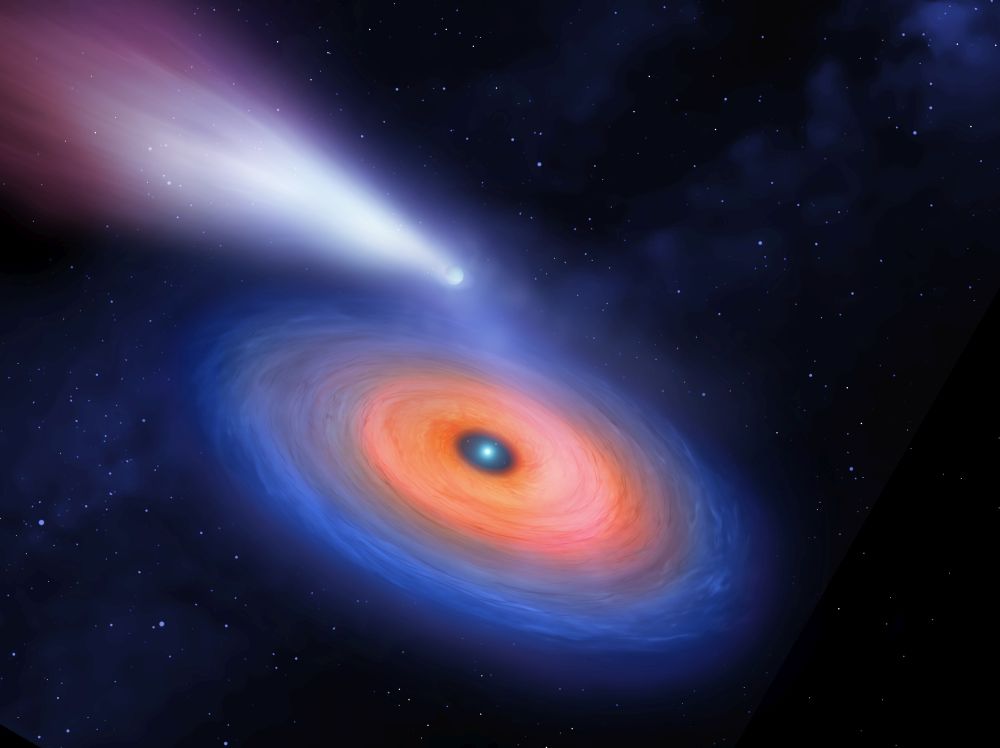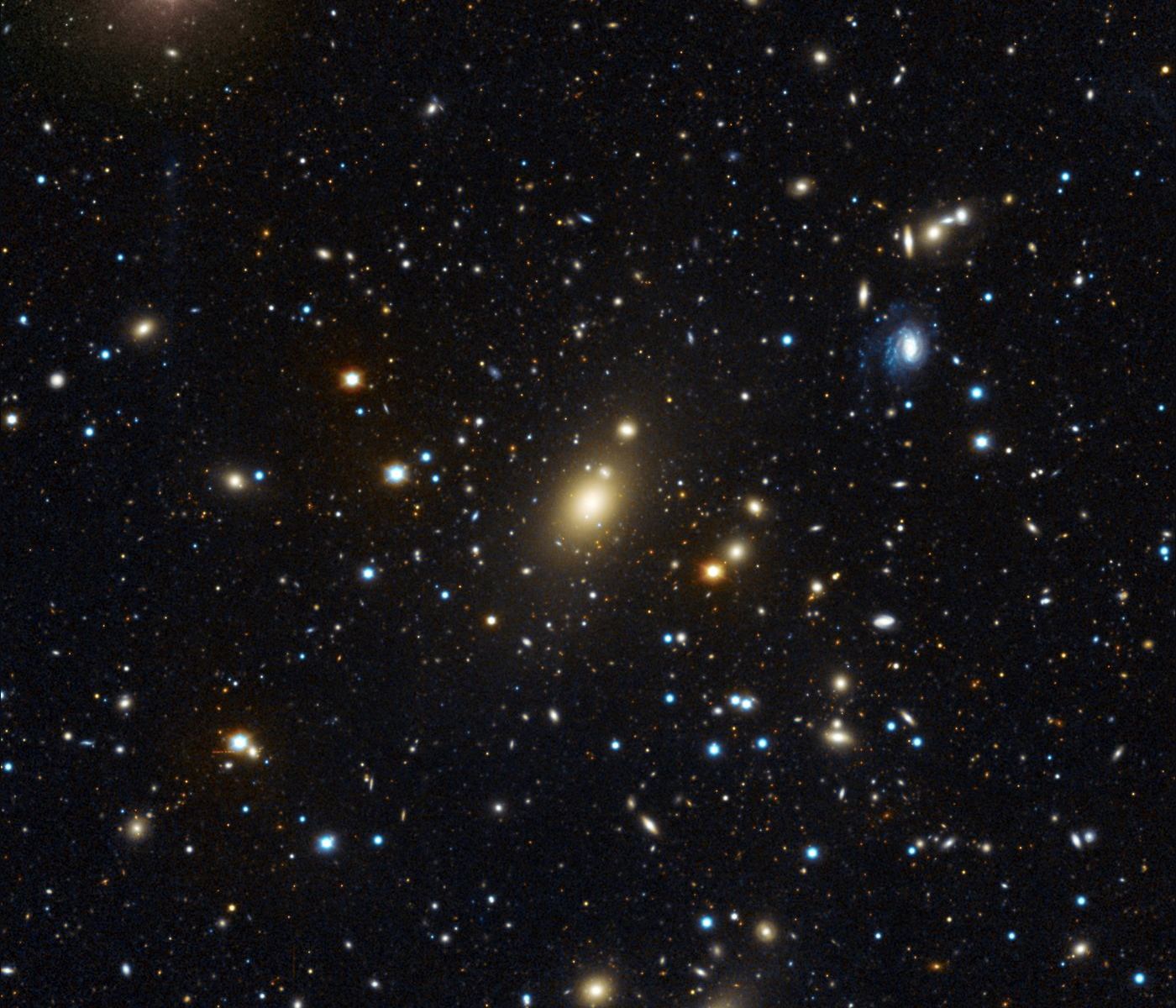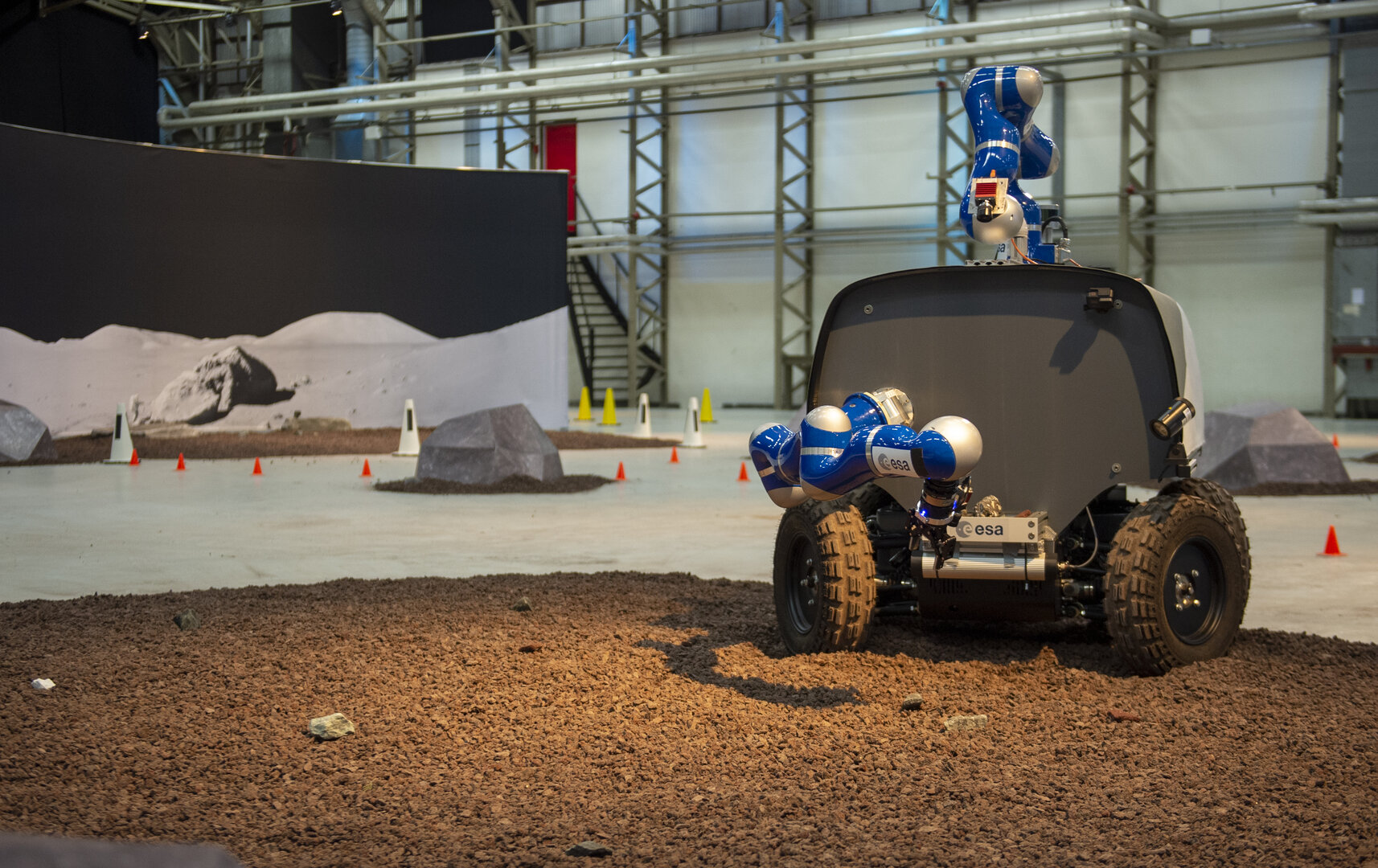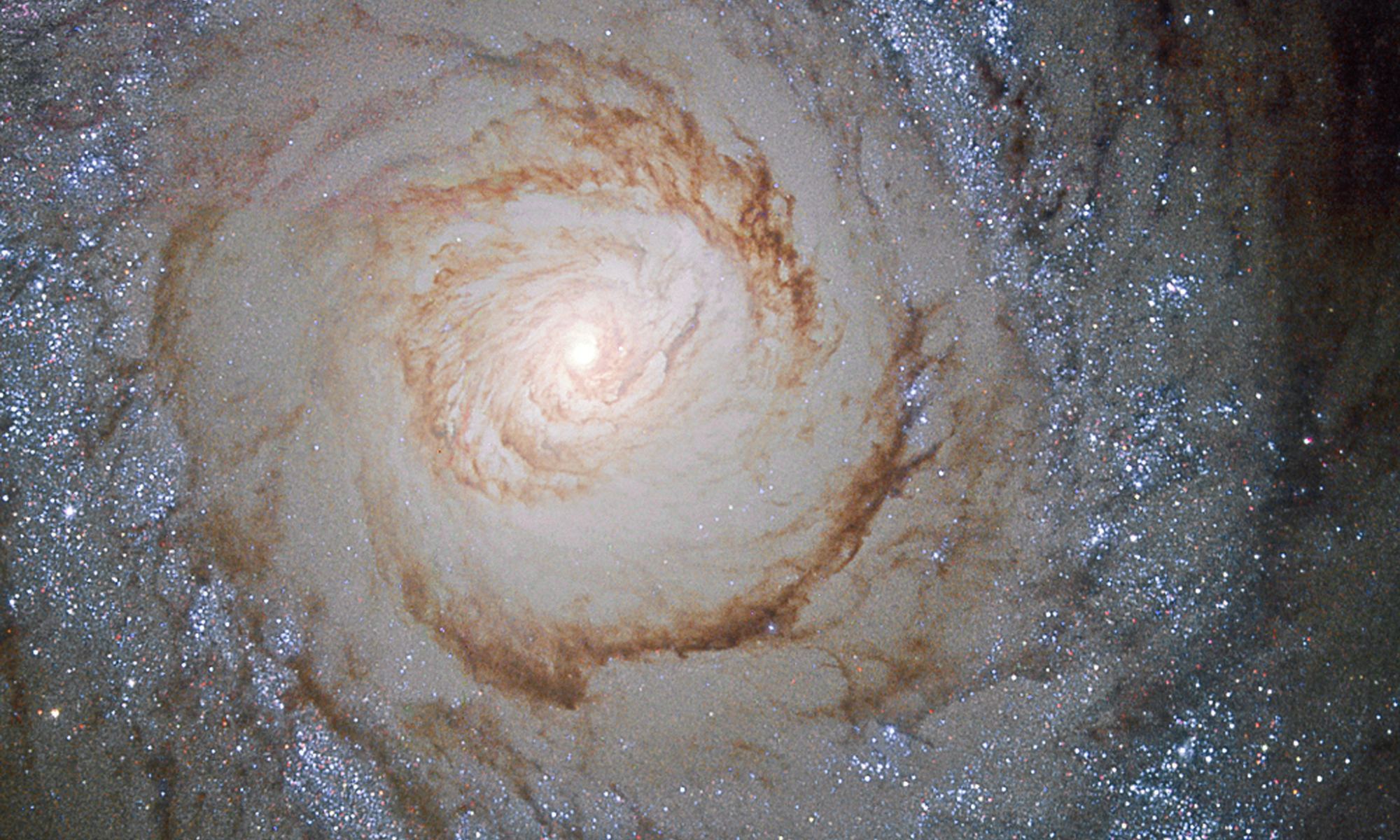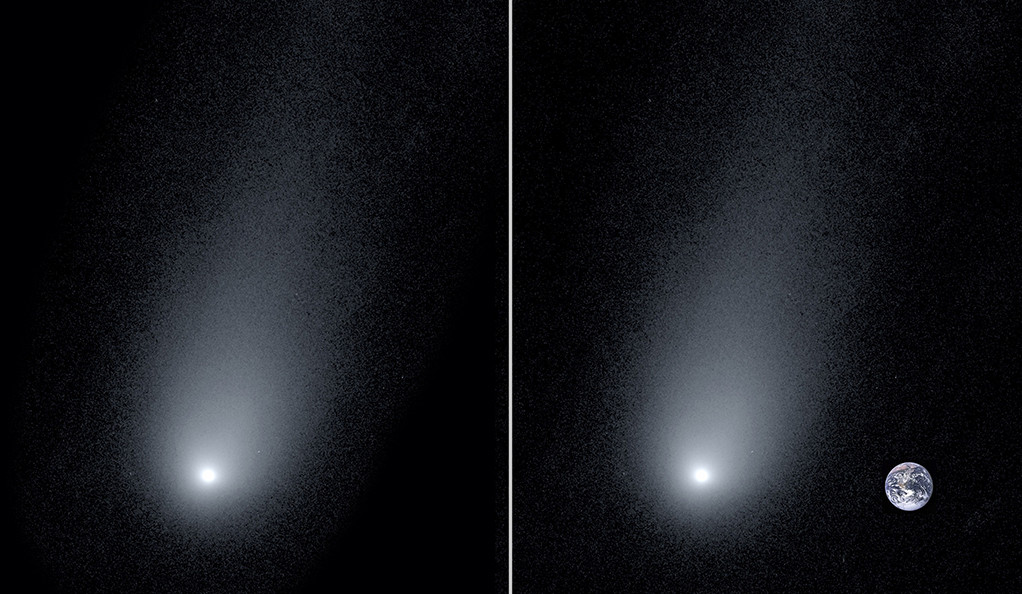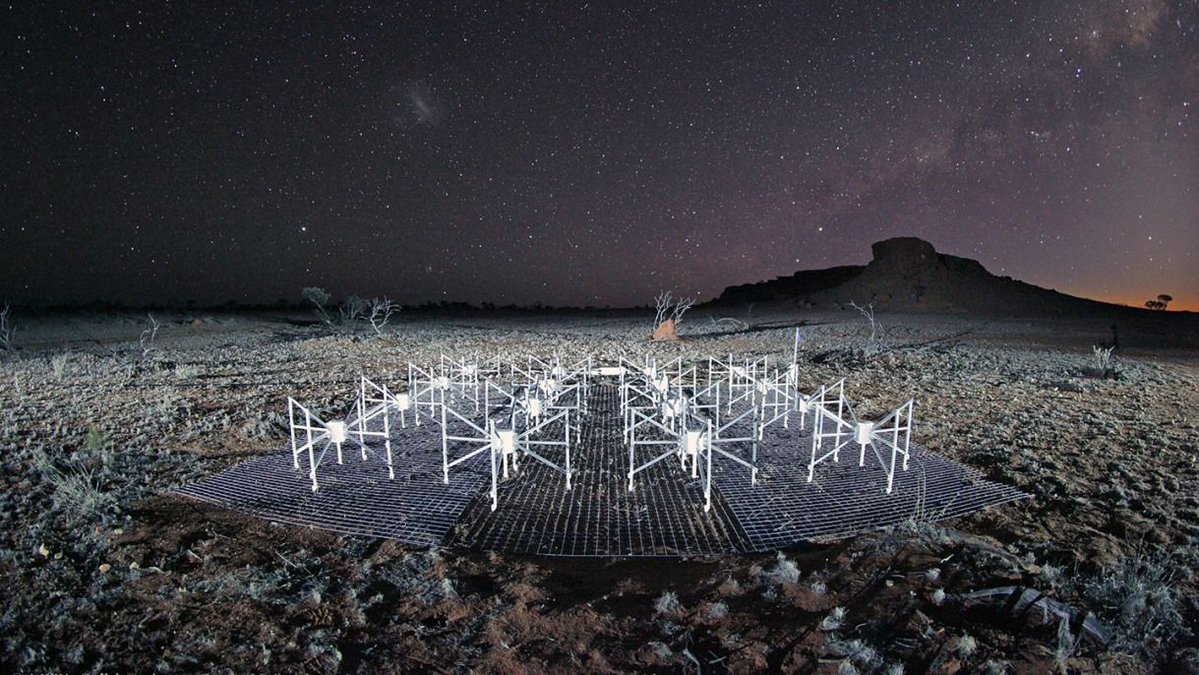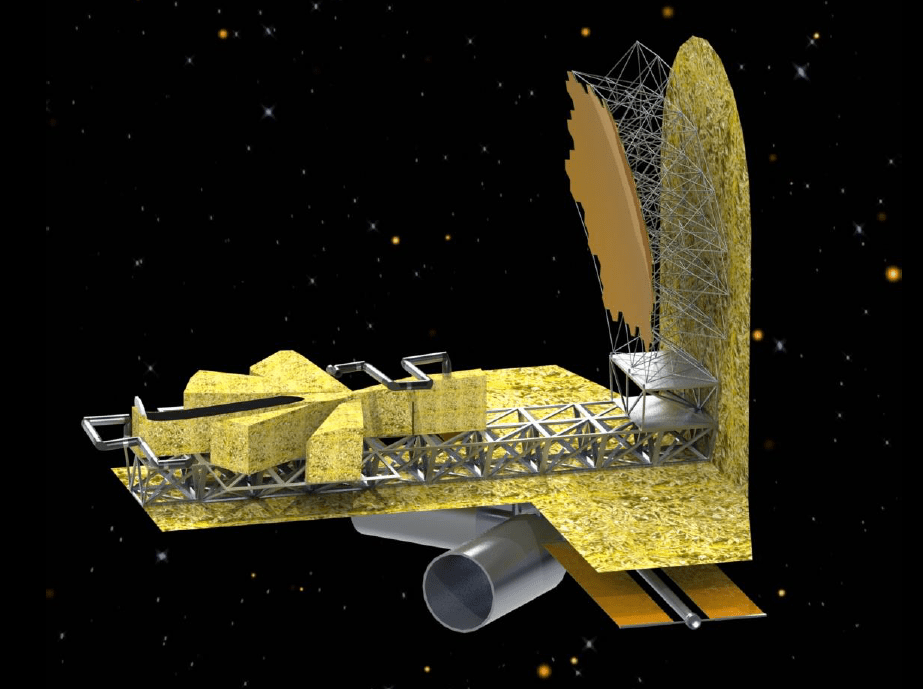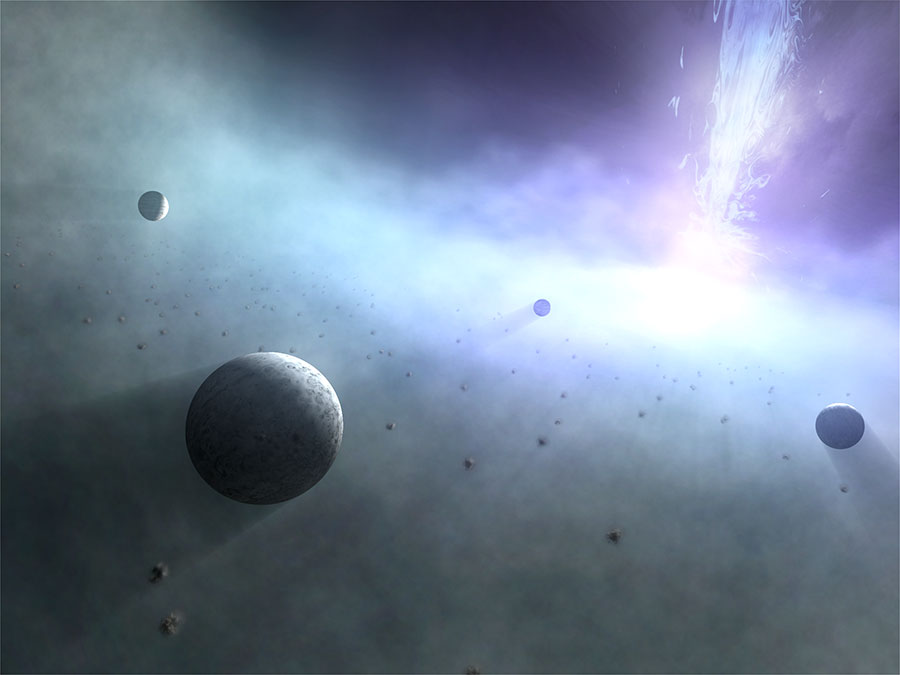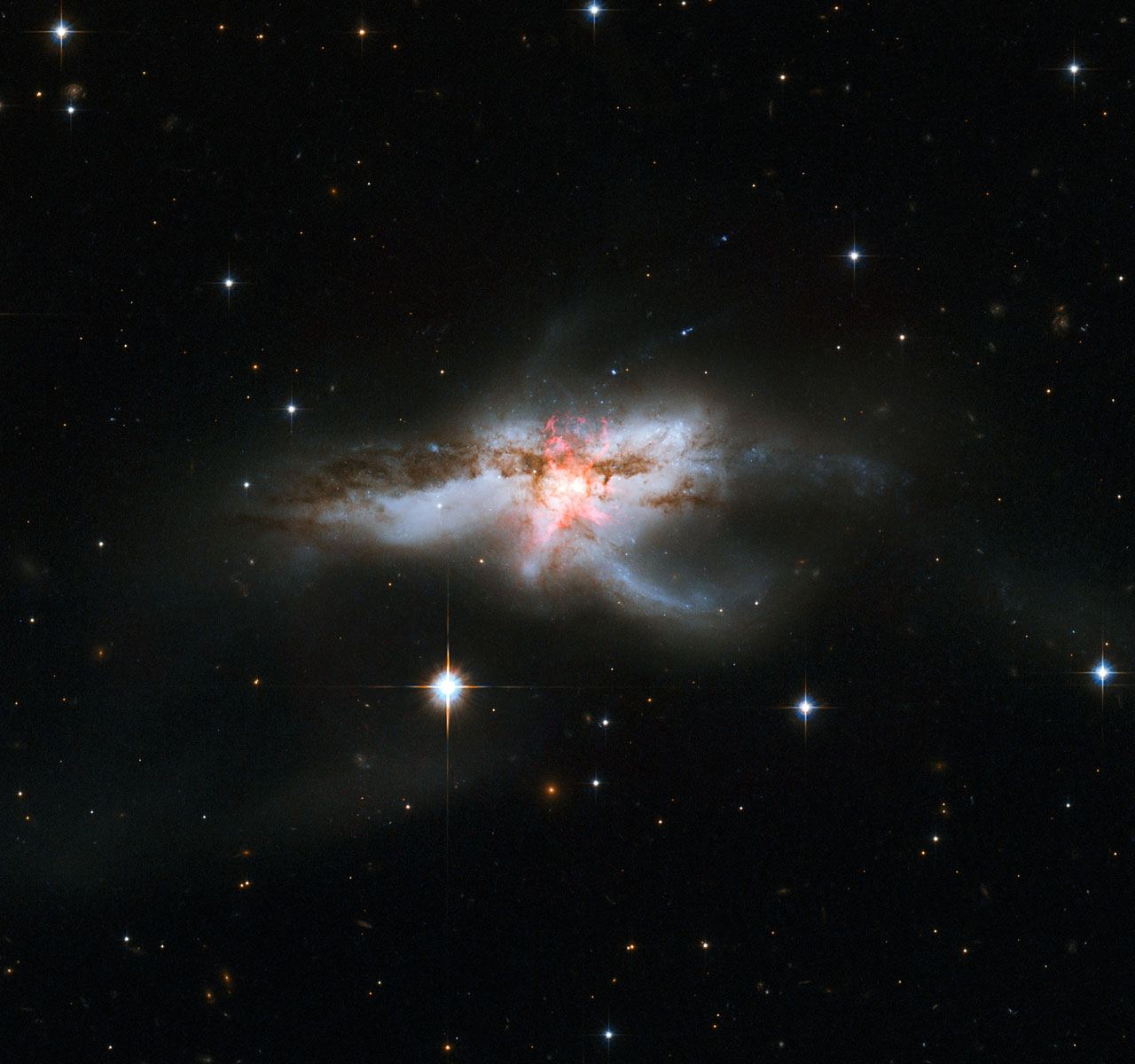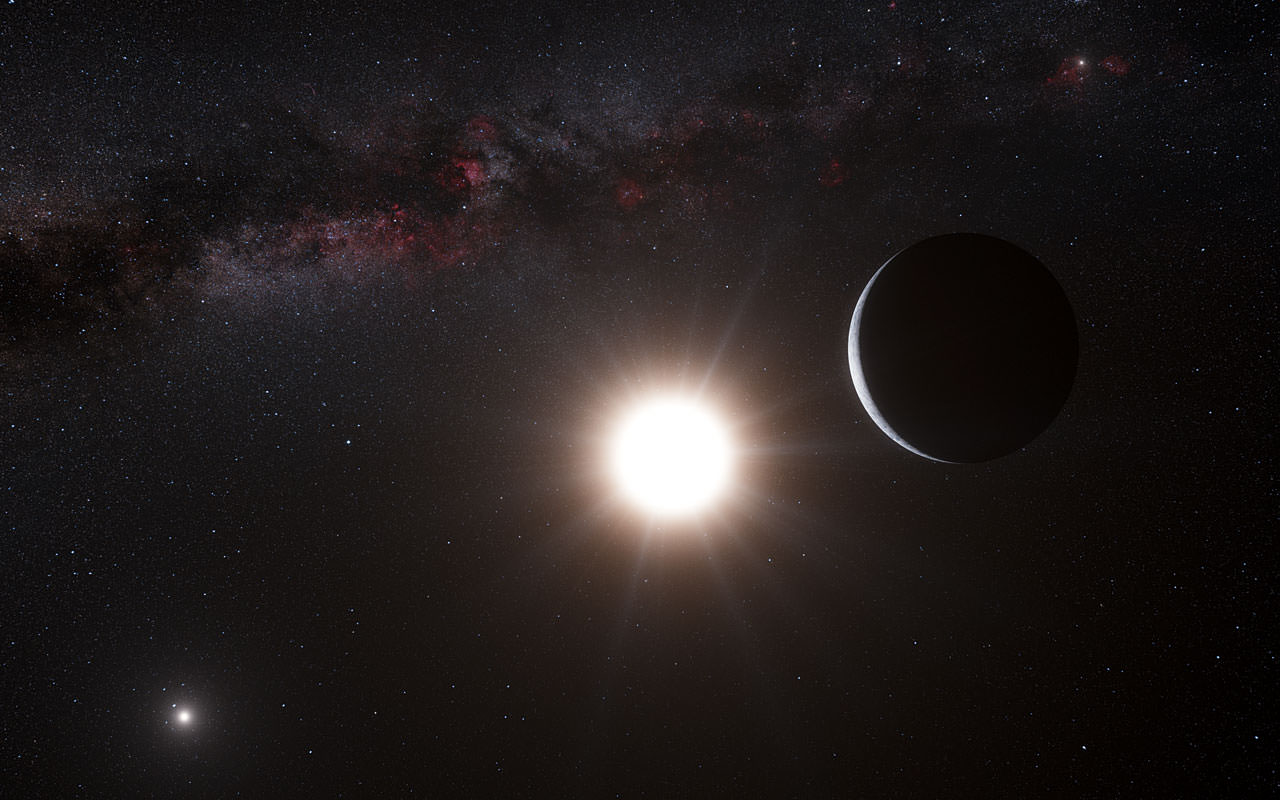Astronomers have discovered a large Neptune-sized planet orbiting a white dwarf star. The planet is four times bigger than the star, and the white dwarf appears to be slowly destroying the planet: the heat from the white dwarf is evaporating material from the planet’s atmosphere, forming a comet-like tail.
Continue reading “Neptune-Sized Planet Found Orbiting a Dead White Dwarf Star. Here’s the Crazy Part, the Planet is 4 Times Bigger Than the Star”Neptune-Sized Planet Found Orbiting a Dead White Dwarf Star. Here’s the Crazy Part, the Planet is 4 Times Bigger Than the Star
